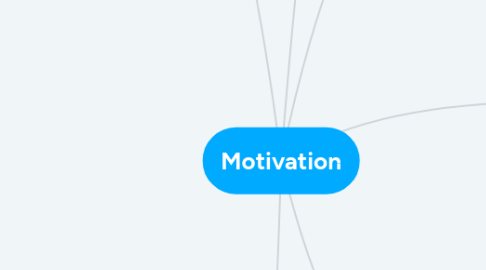
1. Needs-based Theories
1.1. Maslow’s Hierarchy of Needs
1.1.1. Physiological needs
1.1.1.1. basic biological necessities, such as food, drink, rest, shelter
1.1.2. Safety needs
1.1.2.1. pertain to protection and physical well-being
1.1.3. Belongingness and love needs
1.1.3.1. interaction with others
1.1.4. Esteem needs
1.1.4.1. allow people to satisfy their inner desires
1.1.5. Self-actualization
1.1.5.1. when you feel completely satisfied with your life and don't care what others think
1.2. Alderfer’s ERG Theory
1.2.1. Existence needs
1.2.1.1. physiological and safety needs
1.2.2. Relatedness needs
1.2.2.1. social needs
1.2.3. Growth needs
1.2.3.1. esteem and self-actualization
1.3. McClelland’s Acquired Needs Theory
1.3.1. Need for achievement (being successful)
1.3.2. Need for affiliation (being liked)
1.3.3. Need for power (influence)
1.4. Herzberg’s Two-Factor Theory
1.4.1. Hygiene factors
1.4.1.1. company polivies
1.4.1.2. supervision
1.4.1.3. working condition
1.4.1.4. safety
1.4.1.5. salary
1.4.1.6. security
1.4.2. Motivators
1.4.2.1. achievement
1.4.2.2. recognication
1.4.2.3. interesting work
1.4.2.4. increased responsibility
1.4.2.5. advancement and growth
2. Process-based Theories
2.1. Equity Theory
2.1.1. balance between inputs and outcomes
2.1.2. Procedural and Interactional Justice
2.1.2.1. Procedural Justice
2.1.2.1.1. fair decision making procedures
2.1.2.2. Interactional Justice
2.1.2.2.1. everyone is treated with respect in interpersonal interactions
2.1.2.3. Distributive Justice
2.1.2.3.1. outcomes received are fair
2.2. Vroom’s Expectancy Theory
2.2.1. Expectancy
2.2.1.1. Can I do it?
2.2.2. Instrumentality Performance
2.2.2.1. What will happen if I achieve this goal?
2.2.3. Valence Rewards
2.2.3.1. Do I find the outcomes desirable?
2.3. Skinner’s Reinforcement Theory
2.3.1. Positive reinforcement
2.3.1.1. behavior followed by an appetitive stimulus; increases behavior
2.3.2. Negative reinforcement
2.3.2.1. behavior followed by an aversive stimulus; increases behavior
2.3.3. Punishment
2.3.3.1. behavior followed by an aversive stimulus; decreases behavior
2.3.4. Extinction
2.3.4.1. behavior followed by an appetitive stimulus; decreases behavior
3. Types
3.1. Extrinsic Motivation
3.1.1. money
3.1.2. awards
3.1.3. benefits
3.2. Intrinsic Motivation
3.2.1. joy
3.2.2. achievement
3.2.3. relief
3.3. Addiction
3.3.1. guilt
3.3.2. anxiety
3.3.3. shame
4. Components
4.1. activation
4.1.1. how behavior get initiated
4.2. persistence
4.2.1. how long effort is maintained
4.3. intensity
4.3.1. how hard i try
